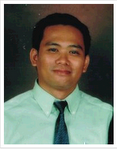The stressor must meet two criteria : (1) be life-threatening or associated with serious injury or threat in physical integrity; and (2) evoke intense fear, helpness, or horror in the victim.
Symptoms are grouped into three categories (1) intrusive, painful, persistent, and recurrent reexperiencing of the trauma (the B criteria); (2) persistent avoidance of stimuli associated with the trauma and numbing of general responsiveness (the C criteria); and (3) persistent increased arousal that was not present before the trauma (the D criteria). Besides being conversant with the symptoms themselves, an assessor of PSTD must pay attention to the qualifying adjectives: “persistent,” “recurent,” and “distressing.” The assessor must also decide whether or not numbed responsiveness and hyperarousal occurred subsequent to teh taruma. In cases of chronic PSTD and in cases of early traumatization, ariving at such judgments is not easy; indeed, the validity of such a construct can be questioned when traumatic events like incest and childhood abuse were the causes of PSTD. Unless proper attentions is given to those points, PSTD may be overdiagnosised.
At least one of five possible intrusive symptomps is quired for B criteria, which represent the essential and distinctive set of symptomps by which represent the essential and distinctive set of symptomps by which represrnt the essential and distinctive set of symptomps by which PSTD is distinguished from all other forms of anxiety and depression.
At least three of seven possible avoidance (C criteria) symptomps are required. The first three criteria – (1) avoiding throughts or feelings associated with the trauma; (2) avoiding activities, situations, or play associated with the trauma; and (3) inability to recall an important aspect of trauma- specifically relate to the trauma. Teh remaining four criteria are not specific to PSTD and may be found in other disorders, such as depression. Both avoidance and numbing are required for the diagnosis.
At least two of five possible hyperarousal symptomps (D criteria) are requide. Those symptomps may also be seen in other disorder, such as generalized anxiety disorder.
On the basis of literatur surveys, no compelling reason lead one to believe that the symptomps picture differs substantially according to teh age, sex, or ethicity of the patient or teh type of trauma. However, somatic expressions of PSTD may be seen more commonly in populations from others cultures, as well as in children. A number of associated symptomps can occur and may prove important in the tretment of individual patients. Those symptomps include survival and teh behavioral guilt, somatic distress, paranoia, interpersonal alienation alienation, and the vegetative changes of depression. Victimes of prologed interpersonal abuse can inhibite impaired modulation of affect, impulsivebehavior, and feelings of ineed on studies of combat veterans.ffectiveness and hopelessness.
Outcome Criteria
· Clients verbalizes awareness of psychologic, and psychologic symptom of anxiety that accompany recollections of a past-traumatic event.
· Identifies situation/event/images that trigger recollections and accompanying responses of past traumatic experiences (small or enclosed spaces, hot or cold climate, argument or fight, sexual intimacy)
· Communicates and interacts within the milieu to control and manage anger and relieve thoughts of self-blame and guilt.
o Communicates thoughts/feelings to a trusted person.
o Problem solves source of thoughts/feelings.
o Participates in group activities.
o Engages in physical activities/exercise.


























0 komentar:
Posting Komentar